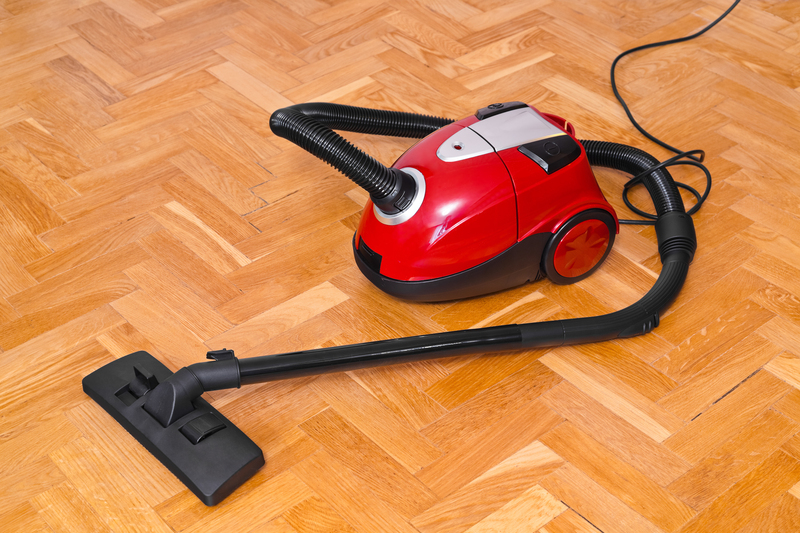Grease-Free Transformation: Uncomplicated Tips for Enamel Tray Cleaning
Posted on 22/05/2025
Grease-Free Transformation: Uncomplicated Tips for Enamel Tray Cleaning
Are you tired of scrubbing endlessly at stubborn, greasy stains on your enamel trays? Achieving a spotless, radiant shine doesn't have to be a chore. With the right approach and a few insider tips, you can transform your enamel baking trays from grimy to gleaming with minimal effort. This comprehensive guide covers everything you need to know about grease-free and uncomplicated enamel tray cleaning. Learn safe, effective, and quick methods that breathe new life into your kitchenware--without harsh chemicals or complicated steps!

Why Regular Enamel Tray Cleaning Matters
- Preserves Tray Longevity: A thorough cleaning schedule prevents the buildup of grease and burnt residues, which can degrade enamel over time.
- Ensures Food Safety: Leftover food particles harbor bacteria; regular cleaning ensures a hygienic cooking surface.
- Enhances Cooking Performance: Clean trays heat more evenly, improving baking results and flavor.
- Maintains Aesthetics: Spotless trays look more inviting for serving and last longer without stains or discoloration.
Understanding Enamel Trays: What Makes Cleaning a Challenge?
Enamel trays are coated with a hard, glossy surface fused onto metal, typically steel or cast iron. Although this coating is non-porous and resistant to most food acids and stains, stubborn greasy residues can become baked-on during cooking. Over time, these accumulate, resulting in unsightly brown or black patches that seem impossible to remove. Understanding the nature of enamel surfaces is crucial for effective tray cleaning while preserving their vibrant luster.
Essential Tools for Grease-Free Enamel Tray Cleaning
- Soft Sponges or Cloths: Prevents scratching the delicate enamel glaze.
- Baking Soda: Mildly abrasive for tackling tough spots without damage.
- White Vinegar: Natural degreaser and stain remover.
- Lemon Juice: Brightens and cuts through grease naturally.
- Wooden or Silicone Spatula: Safe for scraping off stuck residues.
- Dish Soap: Removes day-to-day grease and grime.
- Microfiber Towels: Ensures a streak-free finish.
Pro Tip:
Avoid using metal scrubbers, harsh abrasives, or highly alkaline cleaners, as they can scratch, dull, or even crack the enamel surface.
Step-By-Step Guide: Uncomplicated Enamel Tray Cleaning
1. Immediate Action: The Quick Rinse
The best way to maintain clean enamel trays is to rinse them immediately after use. While the tray is still warm (never hot!), run warm water over the surface. This helps to loosen grease and prevents stains from setting in.
- Rinse with warm water as soon as possible.
- Wipe away loose residue with a soft sponge or cloth.
- For stubborn patches, leave the tray to soak in warm water.
2. Routine Cleaning: Mild Soap and Warm Water Method
For daily maintenance, a simple solution of dish soap and warm water is ideal:
- Fill your sink or basin with warm (not hot) water.
- Add a few drops of mild dish soap.
- Let the enamel tray soak for 10-15 minutes to loosen any food or grease.
- Use a soft sponge to gently clean the surface in circular motions.
- Rinse thoroughly and dry with a microfiber towel to avoid streaks.
3. Battling Stubborn Grease and Burnt-On Stains
If regular washing doesn't get your enamel oven trays or roasting pans perfectly clean, baking soda is your ally.
- Mix a thin paste of baking soda and water.
- Spread this over the greasy or burnt areas and let it sit for 20-30 minutes.
- Gently scrub using a non-abrasive sponge or cloth.
- For especially tough spots, sprinkle a little more baking soda and scrub lightly.
- Rinse and repeat as needed.
Note: Never scrub too harshly--preserving the integrity of the enamel coating is essential for longevity.
4. Natural Degreasers: Vinegar and Lemon Juice
For a grease-free transformation and to remove lingering odors, natural acids work wonders:
- Pour some white vinegar or lemon juice directly onto the grease-stained area.
- Let it fizz and bubble; this reaction helps break down oils and stains.
- Scrub lightly with a sponge, then rinse clean.
- Buff dry with a soft towel for a brilliant finish.
5. Enamel Tray Deep Cleaning
Every few weeks, or if you notice significant grease buildup, consider a deep clean:
- Sprinkle a generous layer of baking soda over the tray's surface.
- Spray or drizzle white vinegar over the baking soda.
- Allow the tray to sit and bubble for 15-30 minutes.
- Scrub gently with a non-abrasive pad.
- Wash with mild soap and rinse thoroughly.
6. Dealing with Discoloration and Persistent Odors
If your enamel tray develops yellow stains or unfamiliar odors after repeated use, try this method:
- Fill the tray with a solution of one part baking soda and three parts hot (not boiling) water.
- Let it soak for a few hours (or overnight if needed).
- Scrub gently and rinse thoroughly to reveal a refreshed surface and neutral scent.
Tip: Always dry enamel trays completely to prevent water spots and further discoloration.
What to Avoid: Common Enamel Tray Cleaning Mistakes
- Never use abrasive steel wool or metal scrapers--these can chip or scratch the enamel coating.
- Avoid harsh chemical cleaners such as oven sprays or bleach; these can corrode and stain the surface.
- Do not subject hot trays to cold water as this thermal shock can cause the enamel to crack.
- Skip the dishwasher if possible--hand cleaning extends the life of your tray.
Preventative Tips for Ever-Clean Enamel Oven Trays
- Line your tray with baking paper or foil when roasting or baking messy foods.
- Clean immediately after use to prevent stains from setting in.
- Avoid high roasting temperatures that can cause food to burn onto the enamel.
- Use wooden or silicone utensils to protect the tray's surface while serving.
Eco-Friendly and Chemical-Free Enamel Tray Cleaning Solutions
Looking to clean your enamel trays without chemicals? Here are some natural alternatives:
- Baking soda and vinegar: The fizzing reaction lifts grease and stains naturally.
- Lemon and salt: Sprinkle salt onto half a lemon and scrub gently for natural bleaching and deodorizing.
- Hot water soaks: Sometimes, time is your best ally; allow trays to soak to loosen tough residues.
Choosing the Right Products for Safe and Effective Enamel Tray Cleaning
While there are many commercial cleaners promising miraculous results, always choose products specifically designed for enamel surfaces. Avoid bleach, ammonia, or highly acidic solutions that may compromise the coating. Check labels for enamel-safe certification or rely on time-honored natural solutions as described above.
Recommended Products for Enamel Tray Maintenance
- Mild dish soaps (unscented, dye-free versions minimize residue)
- Baking soda or sodium bicarbonate for gentle abrasion
- Organic white vinegar or lemon juice for natural degreasing
- Soft bristle brushes or non-scratch scrub pads
How Often Should You Clean Enamel Baking Trays?
Ideally, clean your enamel baking trays after every use. Quick daily wipes and occasional deep cleans prevent the buildup of stubborn deposits. Ongoing maintenance preserves the beautiful appearance and longevity of your cookware.

Frequently Asked Questions About Enamel Tray Cleaning
Can you use baking soda on enamel trays?
Yes! Baking soda is a safe and gentle abrasive perfect for scrubbing away stains and grease without scratching the enamel surface.
How do you remove tough, baked-on grease?
Combine baking soda with vinegar or lemon juice, let the mixture bubble and break down the grease, then scrub gently with a non-abrasive sponge.
Is it safe to clean enamel pans in the dishwasher?
Although many enamel trays are labeled as dishwasher safe, hand washing is preferred to prevent chipping and preserve the enamel coating for years to come.
What should you never use on enamel surfaces?
Do not use metal brushes, abrasive powders, strong acids, or concentrated bleach. These can cause irreversible damage to the enamel finish.
Conclusion: Achieve a Grease-Free Transformation with Effortless Enamel Tray Cleaning
Enamel trays bring vibrant color and excellent performance to any kitchen, but only when kept spotless. By following these simple, non-toxic, and effective enamel tray cleaning tips, you can maintain a grease-free, shining surface with minimum effort. Stick to gentle cleaning agents, quick response to spills, and regular maintenance for long-lasting beauty and hygiene. With these guideposts, uncomplicated enamel tray cleaning will become second nature--and greasy build-up will soon be a thing of the past!
Ready to transform your kitchen? Try these uncomplicated enamel tray cleaning methods today for a gleaming, grease-free bakeware collection!
- Preserve and transform your enamel trays with gentle, effective cleaning habits.
- Avoid harsh chemicals, choose eco-friendly solutions, and enjoy sparkling results every time you bake.
- For more kitchen cleaning guides, bookmark this page and keep your cookware in perfect condition!





